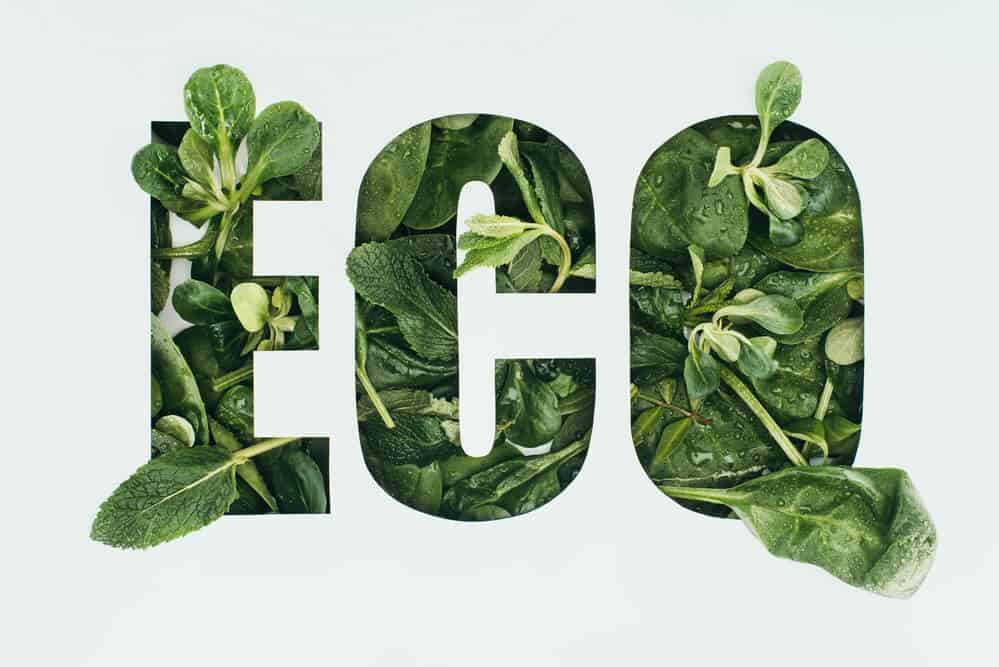You care a lot about the environment, and you are willing to put in the time and effort to reduce your eco-footprint and help the environment begin to heal from decades of abuse.
That’s fantastic, and we’re excited for you, and of course, the planet! However, we also know that it can be tricky navigating all of the emerging terminology and statistics.
Determining which actions actually help the environment and which actions are doing more harm than good requires a bit of research.
For instance, you might not know that eco-friendly and biodegradable are not necessarily the same thing.
Fortunately, you’ve come to the right place to educate yourself on some of the most common environmentalism terms so that you can confidently move forward with your own eco-friendly plan.
Education is your most important tool for leading an eco-friendly lifestyle.
As you learn more about how we affect the environment with our shopping behavior, you’ll also learn how to make responsible product choices that won’t harm the world around you.
We’re all in this effort to save the planet together, so keep reading to learn more about how the products you purchase make a difference!
What Is Eco Friendly?
Let’s start out with a basic definition to clear things up.
Eco friendly is a term used to describe items that are “designed or intended to have little to no damaging effect on the environment.”
It sounds positive enough, but what does that actually entail?
100% Eco-Friendliness Is A Myth
At this time, it is impossible for any product being manufactured to establish a 100% eco friendly profile.
No matter how natural and organic a company’s source materials or practices are, all products leave behind some form of waste.
Keep in mind that even simple products like organic, unbleached cotton that adhere to fair trade certification standards must be processed with water and power.
So, when you encounter eco friendly labels in the future, keep in mind that these labels only guarantee that some percentage of the process, product, or packaging is actually eco friendly.
Furthermore, the percentage of eco-friendliness required to use the label is decided on a case-by-case basis.
Here are some examples of eco friendly practices that brands you trust might be implementing for some real change-
- Many appliances are now offered in eco friendly alternative models, which save water and energy
- Many companies are using less power and water themselves in their production practices
- Some companies are implementing green building technologies such as large windows that allow more natural light and cut down on energy costs
- Some companies are switching to renewable sources of energy such as wind, solar, and geothermal; which have a less negative impact on the environment
- Many companies are cutting back on toxic chemical use in their production measures
- More and more companies are focusing on biodegradable and compostable packaging and products
The last item on the list brings us to our next definitions.
We’ll cover what biodegradable and compostable mean and how these items actually break down in real-world scenarios such as your backyard or local landfills.
What Is Biodegradable?
Biodegradable is another one of those environmentalism terms that is frequently misconstrued.
According to the Oxford Dictionary, to be biodegradable simply means that an item is capable of being decomposed by bacteria or other living organisms.
There is no defined or implied timeline for this decomposition.
Nor is there absolutely any form of guarantee that these items will ever decompose.
The majority of products that are marked as biodegradable will never actually have the chance to do so because the modern waste management system is not set up to cater to these products’ specifications.
Below is a reference list of products that are genuinely biodegradable when disposed of appropriately-
- Disposable dishes and utensils
- Paper products such as toilet paper, napkins, printer paper, etc.
- Human and animal excrement
- Plant-based textiles and furniture
There are many discrepancies between so-called biodegradable products and the system actually in place to handle our waste management.
As a result, many respected researchers are finding compelling evidence that biodegradable products are not eco-friendly.
For example, when biodegradable products are broken down, they release large amounts of greenhouse gases; or Methane.
What Happens When Biodegradables Break Down In Landfills?
According to the North Carolina State University research, biodegradable products are causing as many problems as they’re solving, if not more.
Here’s a quick look at the data recorded by the U.S. Environmental Protection Agency–
- Roughly 35% of municipal solid waste goes to landfill facilities that capture the Methane for energy use
- Roughly 34% of municipal solid waste goes to landfill facilities that capture and burn off Methane on-site to cut down on greenhouse gas emissions
- Roughly 31% of municipal solid waste goes to landfill facilities which allow the Methane gases to escape
While it is significant that some of these gases are being captured and put to good use, 35% isn’t nearly enough to stop the detrimental effects on our environment.
What Is Compostable?
If something is compostable, it will break down completely into natural elements if it is disposed of appropriately.
These elements are rich in nutrients and help rebuild the soil we need to grow healthy food. Compostable items typically break down in 90 days or less.
You’re probably wondering how they manage to break down so quickly?
Compostables are made of plant matter and other organic matter. In other words, the things that nature has been cleaning up itself for thousands of years.
So it makes sense that nature can break itself down so much more quickly than it can process and break down artificial chemicals.
Now That You Know…
It’s true what they say about knowledge. It is power.
Now you know the differences between eco-friendly, biodegradable, and compostable products! As a result, you’ll be much better equipped to make healthy, sustainable shopping choices on your next trip.
Next time you’re choosing between biodegradable and compostable packaging, you’ll know which one is really the eco-friendly choice!


